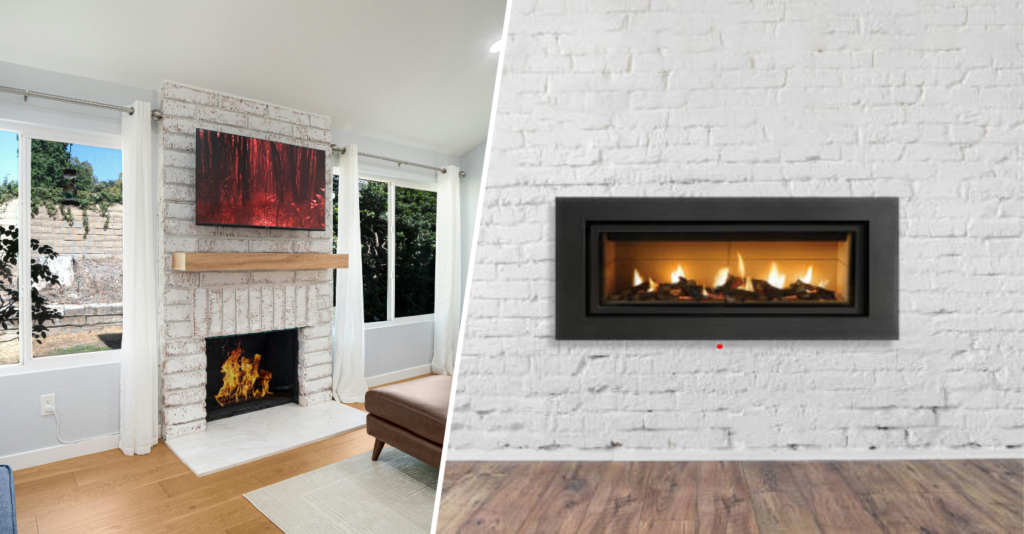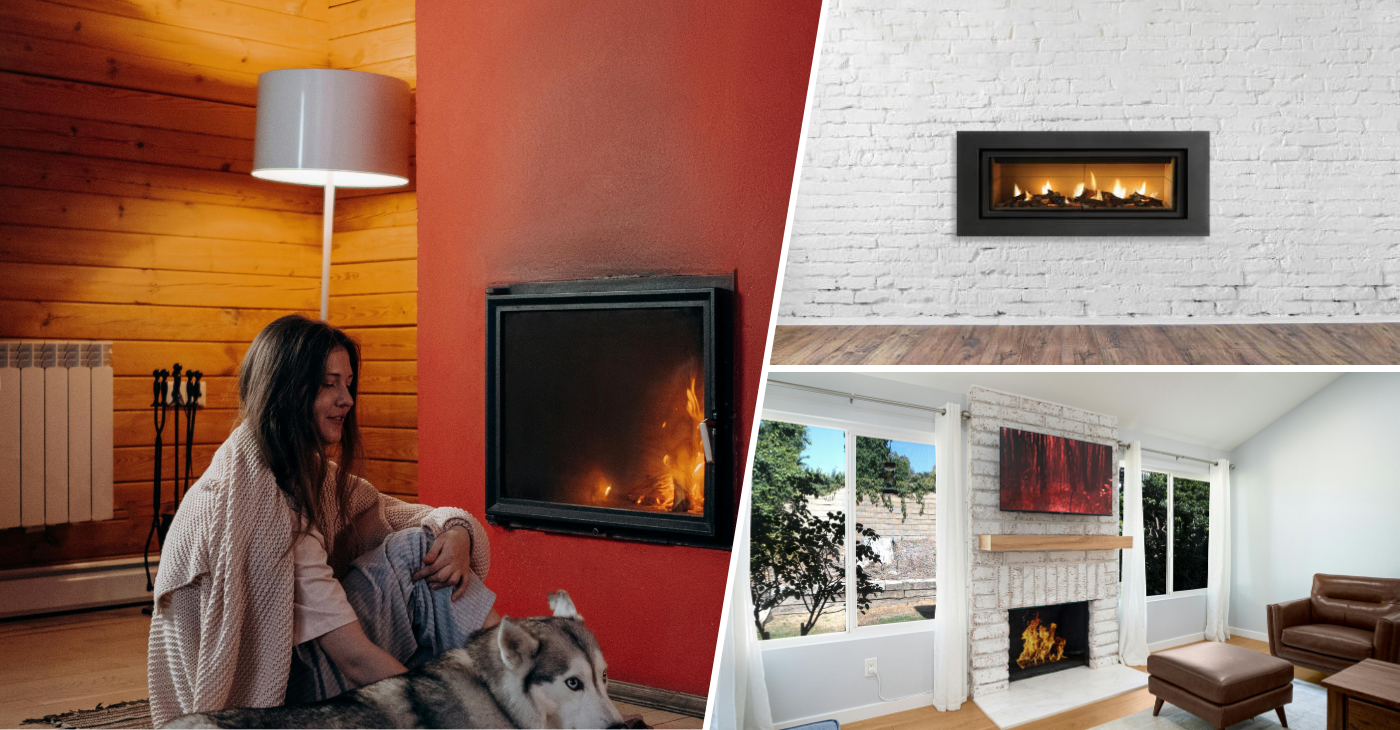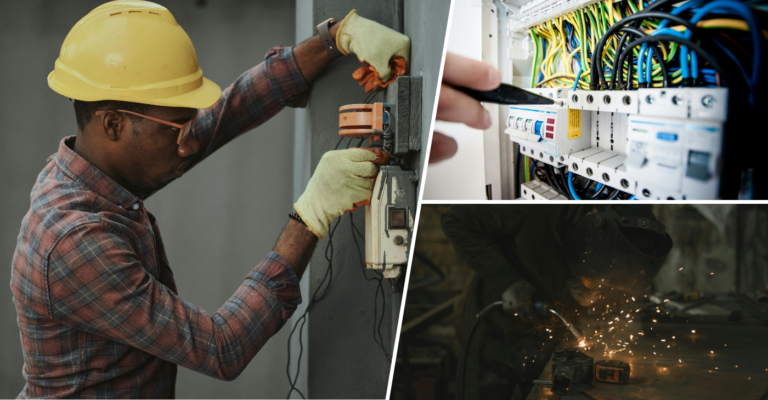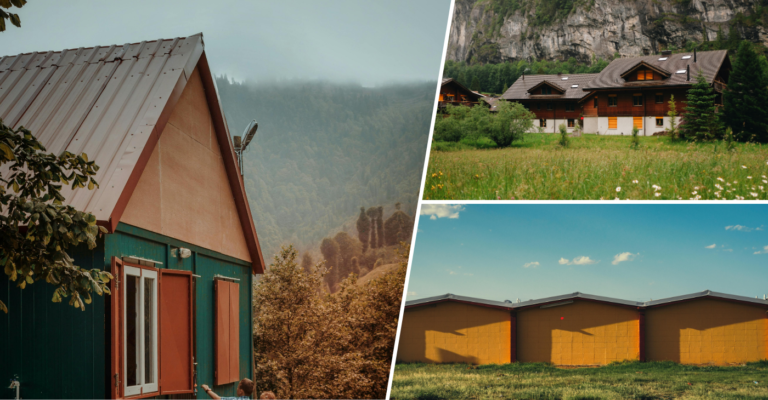Hole in the wall gas fires – A safety upgrade
Why are hole in the wall gas fires safer than traditional fireplaces?
Traditional wood-burning fireplaces might be cosy and nostalgic, but they come with several safety concerns. The risk of fires, harmful smoke, and carbon monoxide poisoning are real dangers. Hole in the wall gas fires are designed to reduce these risks.
Here’s what makes them a safer option:
- No open flames: In a traditional fireplace, the flame is exposed, which can lead to sparks or embers flying out and catching fire. Hole in the wall gas fires, on the other hand, have the flame enclosed behind heat-resistant glass. This eliminates the risk of embers igniting nearby furniture or carpets.
- Sealed combustion system: These gas fires draw air from outside your home, and all combustion gases are vented outdoors through a pipe. This sealed system ensures that no harmful fumes or gases, such as carbon monoxide, leak into your home.
- Remote control and automatic shut-off: Many modern gas fires come with a remote control for easy use. They have automatic shut-off systems in case of a malfunction that the fire turns off if anything goes wrong. This adds an extra layer of protection, giving you peace of mind.
How do hole in the wall gas fires protect against carbon monoxide?
One of the most serious dangers in any home is carbon monoxide, a colorless, odorless gas that can be deadly. It’s a significant risk in homes with wood-burning fireplaces because improper ventilation can lead to carbon monoxide build-up.
Hole in the wall gas fires tackle this issue head-on. Most models are equipped with Oxygen Depletion Sensors (ODS). These sensors monitor the oxygen levels in your room. If oxygen levels drop too low—indicating that the fire is not getting enough ventilation—the system shuts down automatically. This simple but effective feature prevents carbon monoxide build-up, making your home much safer.
Is it safe for families with children and pets?
Yes, hole in the wall gas fires are an excellent choice for homes with children or pets. One of the biggest concerns with traditional fires is the risk of burns from touching the open flame or getting too close to the heat.
With a hole in the wall gas fire, the flame is behind a glass front. The glass stays cool to the touch, even when the fire is on. This means your children or pets can move around the room without the risk of getting burned. Plus, since the fire is enclosed and built into the wall, you don’t have to worry about anyone accidentally knocking over a fire screen or getting too close to the flames.
How do they handle overheating and gas leaks?
Gas leaks and overheating are potential dangers when using any gas fire. However, hole in the wall gas fires are designed to manage these risks effectively. These fires come equipped with Flame Supervision Devices (FSDs). This safety feature automatically cuts off the gas supply if the flame is extinguished for any reason. This prevents gas from leaking into your home, reducing the risk of fire or gas poisoning.
In addition to FSDs, many models include thermostatic controls that monitor the temperature of the fire. If the fire overheats, the system automatically adjusts the flame or turns it off to maintain a safe temperature in the room. This keeps your living space safe and comfortable without you having to constantly monitor the fire.

Does it improve indoor air quality?
Air quality is an important safety consideration, especially for homes with people who suffer from asthma, allergies, or other respiratory issues. Traditional wood-burning fireplaces release smoke, ash, and tiny particles into the air, which can make breathing difficult for some people.
Hole in the wall gas fires, however, produce clean, smoke-free heat. This means no harmful particles or gases are released into your living space. Because these fires are fully vented outdoors, all combustion gases are safely carried away, leaving the air inside your home free from pollutants. For families concerned about indoor air quality, this is a huge benefit.
How easy are they to maintain for safety?
Maintaining a fireplace can sometimes feel like a chore. With traditional wood-burning fireplaces, you have to clean up ash, soot, and regularly sweep the chimney to prevent dangerous creosote build-up, which can cause chimney fires.
Hole in the wall gas fires, on the other hand, are low maintenance. There’s no ash or soot to clean, and there’s no need for chimney sweeping since they use a sealed venting system. Generally, an annual check-up by a professional is all that’s needed to ensure your fire is running safely. This ease of maintenance not only saves you time but also reduces the risk of accidents caused by poor upkeep.
How it is safe to upgrade
With all the safety features mentioned, it’s clear that upgrading to a hole in the wall gas fire is a smart decision for anyone looking to improve home safety. But the benefits go beyond safety alone.
- Energy efficiency: Gas fires are more efficient than wood-burning fireplaces. They convert more fuel into usable heat, meaning you’ll spend less on energy bills while keeping your home warm and cozy.
- Style and design: Hole in the wall gas fires are designed with modern aesthetics in mind. They have a sleek, built-in look that adds a touch of elegance to any room. Whether you’re updating your living space or building a new home, this type of fire can seamlessly fit into your design.
- Instant heat: Unlike traditional fireplaces that take time to get going, gas fires provide instant heat at the push of a button. This convenience is ideal for people who want to quickly warm up their home without the hassle of gathering wood or cleaning up afterward.
- Environmentally friendly: Burning wood releases more harmful emissions than burning natural gas. By upgrading to a gas fire, you’re making a more environmentally friendly choice that reduces your carbon footprint.
- Adds value to your home: A modern, efficient heating system is a desirable feature for home buyers. By upgrading to a hole in the wall gas fire, you could increase the value of your property while enjoying all the safety and comfort benefits it offers.
Conclusion
A hole in the wall gas fire is more than just a stylish heating solution. It’s a significant safety upgrade over traditional fireplaces. These fires offer a safer way to keep your home warm with features like enclosed flames, oxygen depletion sensors, and automatic shut-off mechanisms. Whether you’re concerned about preventing carbon monoxide build-up, improving indoor air quality, or protecting your family from burns, a hole in the wall gas fire is the perfect solution. Upgrading to this type of gas fire means fewer maintenance worries, better energy efficiency, and a more modern look for your home. In terms of safety, comfort, and convenience, a hole in the wall gas fire is a smart investment that gives you peace of mind while adding value to your home.







